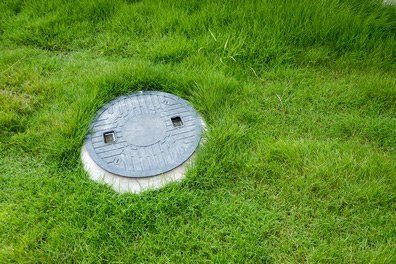SEPTIC SYSTEM101: HOW YOUR SEPTIC SYSTEM WORKS
- By Admin
- •
- 12 Apr, 2018
- •

Most people who live in a moderately to heavily-populated area have a public sewer system that services their home. However, if you live in rural area, you likely have a septic system for your wastewater. You probably know that you need to get it pumped every few years or so, but you may be unfamiliar with your system's inner workings. Here's how your septic system works.
SEPTIC TANK
Just like in a house with a sewer hookup, wastewater leaves your home through a pipe. However, instead of heading out to the sewer, it goes to a septic tank underground on your property.
When the wastewater enters the tank, the solid waste begins to settle to the bottom, turning into sludge over time. Lighter waste, such as oil and grease float to the top. The remaining liquid waste in the middle of the tank either tees off into another compartment for additional filtration or exits the tank through another pipe heading out to the septic field.
Septic tanks come in different sizes, shapes, and materials. The size will depend on the size of the house and number of bedrooms, but most are between 1000 and 1500 gallons. Some tanks are one large compartment, while others have two compartments for improved filtration.
Most people with septic systems have a concrete tank. Concrete is strong, relatively inexpensive, and can last a long time, so it's a good all-around material for a tank. The downsides are that it's very heavy, and doesn't offer as tight of a seal as other options.
Fiberglass and polyethylene - a type of plastic - are two other popular septic tank materials. These have the advantage of being completely seamless, so unless they're damaged, they're virtually leak-proof.
They're also much lighter in weight than concrete, which makes them ideal for installation in remote, hard-to-reach places.
DRAIN FIELD
After it's been filtered and separated in your septic tank, the wastewater discharges into the septic drain field. A series of perforated drain pipes disperse the wastewater into a specially designed soil bed, built up with gravel and various types of soil. Microorganisms in the soil treat the wastewater to help remove organic matter and other solids, and the effluent is distributed across the field to drain.
ROUTINE MAINTENANCE
A septic system requires a little maintenance to keep it working properly. Over time, sludge builds up in the bottom of the tank. When there's too much sludge, the wastewater doesn't filter properly, and solid waste can make its way into the drain field along with the liquid. If the problem gets bad enough, solid waste can back up into your home.
For this reason, all septic tanks need to be pumped on occasion. The average is every three years. If your water usage is higher than average, or if you have an older tank, you may need to have it pumped more often.
BENEFITS
While a septic system does require a bit more maintenance than a public sewer connection, there are some benefits. Chief among these is that it saves you money by eliminating your monthly sewer bill. While this may not be among your larger expenses, over the years, it can save you money.
Although you will have to pay to have it pumped every few years, this expense usually pales in comparison to the amount you'd pay in sewer bills over the same period of time.
If you have a septic system, routine maintenance is key to keeping it working properly and reducing the risk of expensive repairs. For all of your septic service needs, contact Allen Turner Septic Tank Service.
Septic tanks are important for the treatment of wastewater treatment. Read this blog on the various aspects of septic tank replacement.
When you grow up in a house, you typically won't have a manual of what to flush down the toilet. Discover common family flushing traditions to avoid.
Septic systems provide an effective solution for wastewater. Read this blog about some considerations to think through before installing a septic system.
What shouldn't go into your septic system? Read this blog to learn what products should not enter your septic system through toilets or drains.
Many appliances in your home are the source of items that can damage your septic system. Discover some of those problematic appliances.
Washing laundry can affect your septic system’s operation. Consider the laundry tips from this blog post to protect your septic tank.
A septic system consists of components located underground that use natural techniques to treat wastewater. See the main types of septic systems for homes.
Septic tanks require proper care and maintenance to function correctly, and this can be complex if you have pets. See septic tank care tips for pet owners.
Maintenance costs for septic tanks can add up, but you do not have to spend a fortune. Learn how proper care can save you money on septic services.
For the best septic tank services, careful considerations are necessary. Discover a few qualities to look for in the septic tank company you hire.

